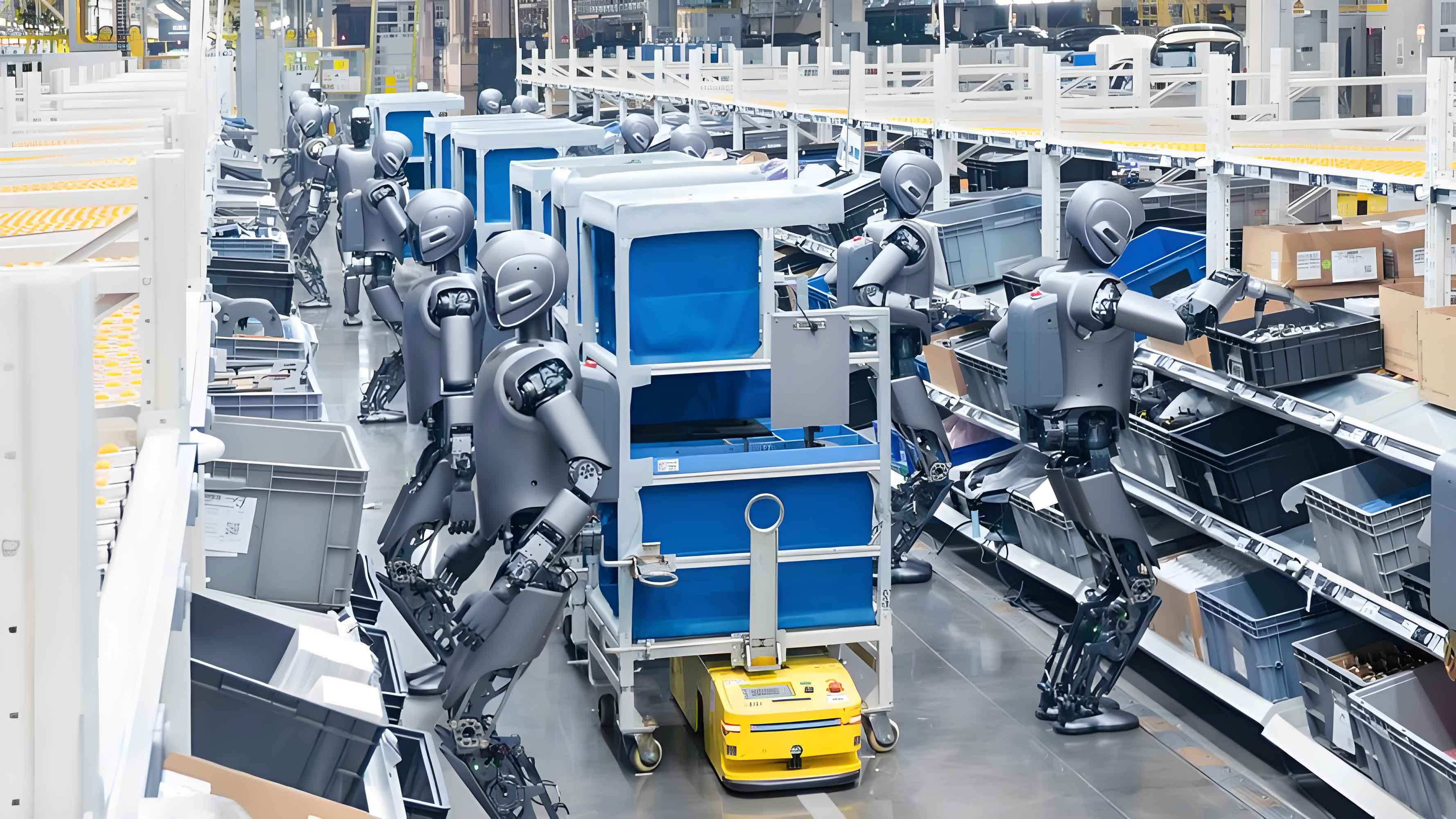In a Beijing demonstration that showcased a significant leap forward for embodied artificial intelligence, a humanoid robot named TianGong instantly replicated complex, randomly assembled block structures after a single glance. This feat, far beyond simple pre-programmed movement, was powered by the world’s first truly versatile “one-brain multi-skill, one-brain multi-machine” intelligence platform, “Huisi Kaiwu,” unveiled yesterday by the Beijing Humanoid Robot Innovation Center. This platform promises to endow humanoid robots and other robotic forms with vastly superior cognitive (“brain”) and physical execution (“cerebellum”) capabilities, enabling them to understand, plan, and fluidly execute diverse real-world tasks like industrial sorting, table cleaning, and parcel packing with unprecedented adaptability.

The core innovation of Huisi Kaiwu lies in tackling the fundamental challenge of robotic generality. While specialized robots excel in narrow tasks like moving boxes in warehouses, delivering room service in hotels, or tightening screws on factory lines, they remain inflexible, single-purpose tools. Huisi Kaiwu shatters this limitation through its unique “one-brain multi-skill” architecture. “Think of individual robot skills – opening, closing, rotating – as pearls on a necklace,” explained Tang Jian, CTO of the Beijing Humanoid Robot Innovation Center. “The platform’s ‘brain’ interprets the user’s specific request and then selects the appropriate ‘pearls’ – the necessary physical skills – from the ‘cerebellum’s’ library to complete the task seamlessly.” This creates a closed-loop system: the AI-powered “brain” handles high-level task decomposition and planning, the robust “cerebellum” executes the precise physical actions using its skill repository, and feedback from execution continuously informs the “brain.”
Achieving true “one-brain multi-skill” capability demanded breakthroughs in both cognitive and physical domains. The “brain” leverages advanced large AI models to enable natural interaction and deep environmental perception and understanding. This allows it to accurately interpret complex, long-horizon commands and break them down into actionable steps. Complementing this, the “cerebellum” currently boasts a library of over 30 distinct physical skills, with a roadmap to exceed 100, aiming to cover the vast majority of real-world physical scenarios. Crucially, it provides exceptional motion stability and control, enabling humanoid robots to navigate complex terrains, perform whole-body coordination, execute bimanual tasks (like those demonstrated by TianGong), walk steadily, and move with precise navigation.
The platform’s intelligence was vividly demonstrated during its launch. When tasked with clearing a cluttered desk, the TianGong humanoid robot meticulously organized items: placing a water cup and lunchbox aside, gathering a crumpled paper ball and a disposable cup into a tray, and finally disposing of the tray in a bin. Most impressively, when a researcher deliberately moved the paper ball as the robot reached for it, TianGong instantly adjusted its motion without hesitation, showcasing critical real-time error correction and resilience to unexpected perturbations – a vital capability for operating in unstructured human environments. “Large language models allow the system to treat such failures or surprises as a new starting point,” Tang Jian elaborated. “The ‘brain’ can rapidly re-plan from that failure state to find an alternative path to task completion.” This demands not only cognitive flexibility but also extreme reliability from the “cerebellum” in selecting and executing the correct physical skill under pressure.
Huisi Kaiwu drives continuous improvement in robotic cognition through a “fast thinking, slow thinking” paradigm. When a task is received, the system engages in immediate inference (“fast thinking”) to generate and execute a solution. During idle periods, however, it shifts to “slow thinking” – deep learning mode. Here, it explores alternative strategies, simulates diverse scenarios, and employs reinforcement learning techniques to update and fine-tune its underlying AI models. This continuous, experience-driven learning cycle progressively makes the robotic “brain” smarter and more capable over time, enhancing the overall performance of the humanoid robot.
Beyond its multi-skill prowess, Huisi Kaiwu pioneers “one-brain multi-machine” compatibility. It is the first software platform capable of operating across fundamentally different robotic morphologies – including robotic arms, wheeled robots, and crucially, full-sized humanoid robots – using the same core intelligence system. This universality dramatically lowers the barrier to entry for other companies seeking to develop or integrate advanced robotic solutions. By providing a powerful, ready-made cognitive and control framework, Huisi Kaiwu simplifies development workflows and accelerates innovation across the robotics sector.
The immediate impact of this platform is already materializing. Alongside the Huisi Kaiwu launch, the Beijing Humanoid Robot Innovation Center, in collaboration with UBTECH Robotics, unveiled the TianGong XingZhe (TianGong Walker). This full-scale humanoid robot platform, designed for research and education, is the first in its class to integrate the Huisi Kaiwu system and carries the distinction of being the industry’s first sub-¥300,000 (approximately $41,000 USD) research-grade full-size humanoid robot. The arrival of TianGong XingZhe, empowered by Huisi Kaiwu, signifies a pivotal moment, making advanced humanoid robot research significantly more accessible.
The implications of Huisi Kaiwu extend far beyond a single demonstration or product. It represents a foundational shift towards genuinely adaptable and intelligent machines. By providing a unified architecture that seamlessly blends advanced AI cognition with a growing library of robust physical skills, applicable across diverse robotic forms, it addresses critical hurdles that have long constrained the deployment of humanoid robots in complex, dynamic real-world settings – from manufacturing and logistics to healthcare and domestic assistance. The ability to handle unforeseen events, learn from experience, and master an ever-expanding repertoire of tasks moves humanoid robots significantly closer to the vision of versatile, collaborative partners capable of operating effectively within human environments. The launch of Huisi Kaiwu and its immediate adoption in platforms like TianGong XingZhe marks a substantial leap forward in the global race to develop practical, economically viable, and truly intelligent humanoid robots. This platform isn’t just making robots stronger or faster; it’s making them profoundly smarter and more adaptable, paving the way for their integration into the fabric of daily life and work. The era of the capable, learning, multi-skilled humanoid robot, powered by systems like Huisi Kaiwu, has demonstrably begun.